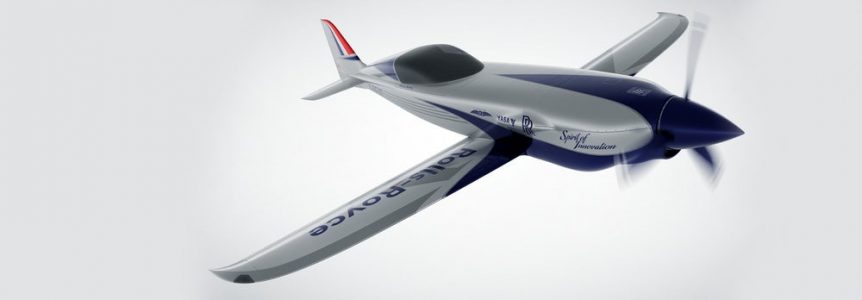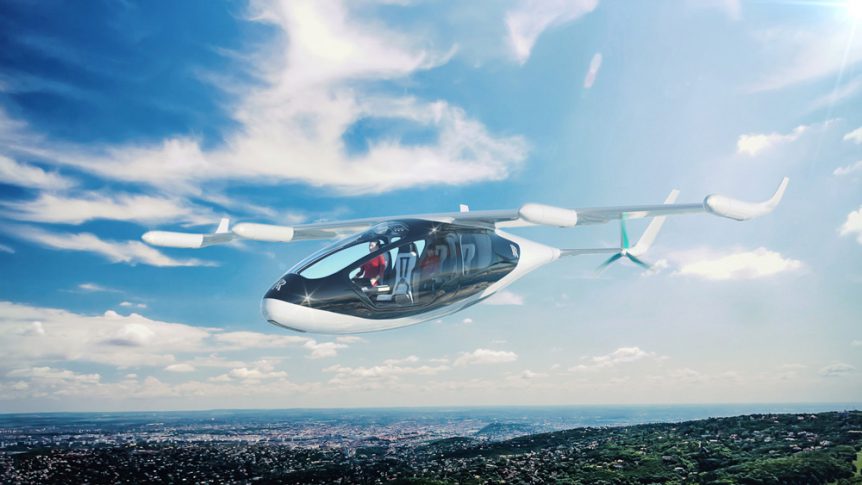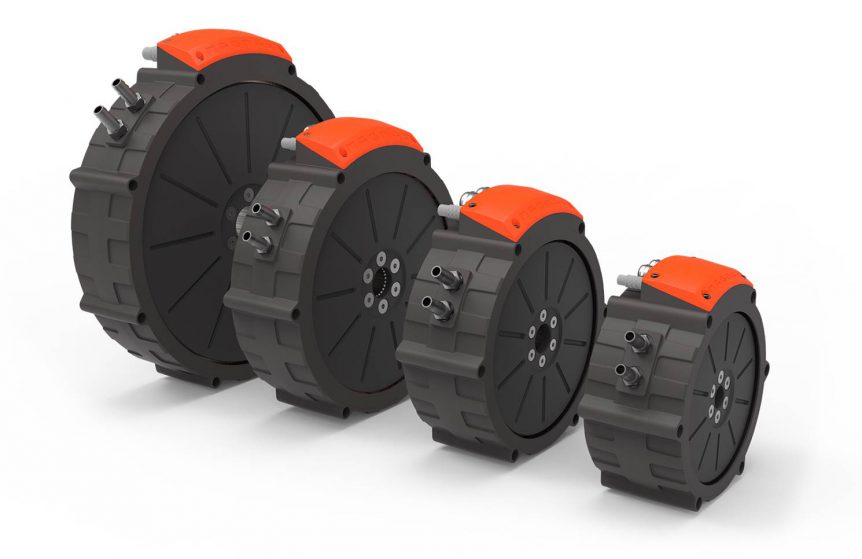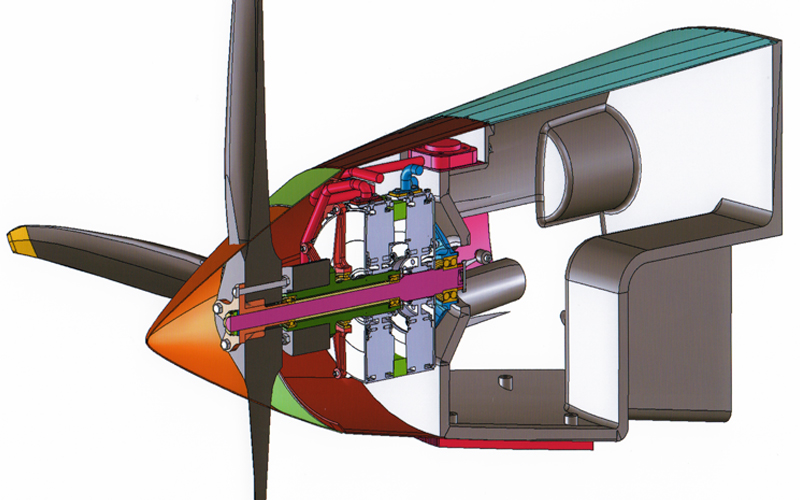Rolls-Royce’s ACCEL program and a consortium of partners want to create the world’s fastest electric airplane. The concept has a recent series of predecessors, and a fascinating tie to an American speed champion. About five years ago, something called the TEACO (The Electric Aircraft Company) Bat, a formula 1-type raceplane powered by an electric motor, generated a great deal of interest. It initially housed a single 80-horsepower electric motor, but once affiliated with Williams Engineering; the project added a twin-motor unit on a set of sleeved parallel shafts swinging contra-rotating propellers. Now, a partnership led by Rolls-Royce seems to have added a third motor, with all three singing in unison to drive a three-bladed propeller. The airframe is new, too, comprising a shape that looks a great deal like the U. S racing champion, Nemesis NXT. Powered by a Lycoming IO-540 engine that airplane set a world speed record of 397.40 mph at the Moriarty Airport in Moriarty, New Mexico …
Rolls-Royce Rolls a Few New Approaches
Rolls-Royce, famous for building engines such as the WWII Merlin that powered Spitfires, Mustangs, Mosquitos and Lancaster bombers, is engaged on three (or four) fronts currently, bringing hybrid electric transport to the skies. Hybrid Electric VTOL for Commuting Rolls is jumping into this crowded market segment with its concept for an electric VTOL (Vertical Takeoff and Landing) machine, powered by four electric motors on the wings and two on the tail. With over 100 machines of varying configurations that might be the Uber rides of the future – according to Electric VTOL News, Rolls, normally a conservative company, is planning something a bit radical – even in this field. Rolls’ headline for this craft indicates a new direction for the firm: “Quieter, cleaner and potentially disruptive: EVTOLs prepare for take-off.” Launching at Farnborough this month, Rolls’ machine and its goals are best described in their launch publicity. “Rolls-Royce’s hybrid EVTOL concept is based around the M250, the engine of choice …
Magnax Motor Claim Impressive Power-to-Weight Ratios
Echoing, in this editor’s mind, the collaboration between Oxford University and YASA motors, a recently announced motor from Belgium’s Ghent University and Magnax, makers of what they term an “axial flux machine.” Similar to YASA’s products, the motors are yokeless, which the makers claim promotes lower weight and the shortest possible flux path. Beyond this feature, the motor/generators offer “A patented system for cooling the windings, for the lowest possible stator temperatures.” According to Magnax, their Dual permanent magnet rotors give “the highest possible torque-to-weight ratio.” Rectangular section copper wire fills more area than round wire and concentrated windings allow “the lowest possible copper losses (no coil overhangs).” Grain-oriented electric steel lowers “core losses by as much as 85-percent.” The company’s white paper gives graphic and written explanations as to why these factors enable the Magnax motors to achieve 96-percent efficiency. While the company compares their motors to large, stationary industrial motors which apply radial flux to their operation, it might be …
Britain Puts an Electric Nose on a New Zealand Carbon Fiber Falco
Richard Glassock, an Australian now working in Hungary, has been a presenter at an Electric Aircraft Symposium and received worldwide interest for his eight-passenger, open cockpit sailplane design a few years ago. He writes today to share news about a twin electric motor conversion for a Falco, the great, high-speed craft by Italian Stelio Frati. Originally designed for four-cylinder, horizontally-opposed engines of up to 300 horsepower, the wood airframe was incredibly complex and required thousands of hours to construct. Signor Aldini reported taking 80 hours just to make the main spar’s jig – with four people needed to complete clamping before the glue set. With the increasing difficulty of finding aircraft-grade sitka spruce or aircraft-grade wood craftsmen, those who can replace their time with money can purchase an all-carbon-fiber composite kit with qualifies under the FAA’s 51-percent rule – the homebuilder being responsible for 51 percent of the construction. All kits for the airframe, firewall back, total over $92,000 (U. S. …
Three Races Going Electric – or at Least Hybrid
Three major automobile and motorcycle races are adapting electric or hybrid power, and seeing winners in all categories. The three take place in the month of June every year, making the month a showtime for innovation and a demonstration of incredible driving skills. Isle of Man Perhaps the most dangerous of all events, the Isle of Man Tourist Trophy motorcycle race covers 37 miles on public roads running through countryside and villages. Over 200 riders have been killed on the course since the first race in 1910. This doesn’t discourage over 100 riders from qualifying every year and hitting top speeds near 200 mph. The winning gasoline-powered superbike this year averaged 128.749 during its six laps around the island. By comparison the winning electric bikes in the TT Zero race do only one lap around the course, limited by the current state of battery development. This year’s winner, John McGuinness riding a Honda/Mugen electric, averaged 119.279 mph, edging into superbike …
PADA Lectures Highlight Innovation
The 2014 Personal Aircraft Design Academy (PADA) dinner and awards ceremony, the latter held in the Vette Theater at the Experimental Aircraft Association’s Museum, highlighted design innovation and the possible commercial exploitation of new technology. Dr. Brien Seeley, Founder and President of the CAFE Foundation, hosted the evening and introduced your CAFE blog editor, who gave an overview of innovations in aircraft, avionics and powerplants he’d encountered on his daily hikes around Wittman Field. Dr. Seeley had the honor of presenting this year’s PADA trophy to John O’Leary, Vice President and General Manager of Airbus Americas Engineering (AAE), for the parent company’s development of the E-Fan, a twin-motored personal airplane that has been a highlight of the Paris and Farnborough air shows. With the flying displays behind it, the proof-of-concept machine will be the basis for two-seat (E-Fan 2.0) and four-seat (4.0) production variants that will bring smooth electric power to private flight. The two-seater, which can double as a …




